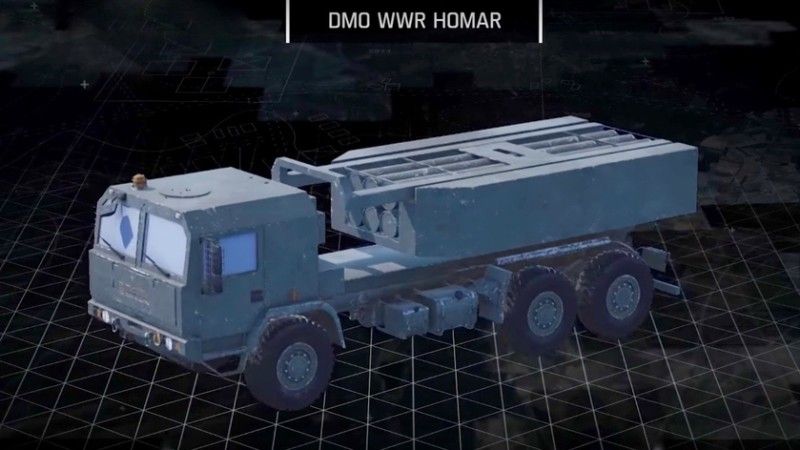Change of the Homar Programme Procurement Procedures. HIMARS System Negotiation Underway [Commentary]

The procurement procedure concerning the “squadron fire modules” of HOMAR multiple rocket launchers has been brought to an end by Mariusz Błaszczak, the head of the Polish Ministry of Defence. This week a number of MoD delegates would begin intergovernmental talks concerning the acquisition of the Lockheed Martin HIMARS (High Mobility Artillery Rocket System) solution.
The Polish Ministry of Defence decided to end the proceedings carried out in line with the procedure adopted back in 2015 and immediately begin negotiation with the US government. [...] This week an MoD delegation, headed by Minister Sebastian Chwialek who is responsible for technical modernization of the Polish military, would travel to the United States to begin talks on implementation of the HOMAR programme, on the basis of the High Mobility Artillery Rocket System – HIMARS solution. One of the reasons why we resigned from the launcher procurement process utillized comes in a form of financial expectations on the part of the potential contractors, including foreign ones, that exceed the amounts secured by the MoD for that purpose when the task has been initiated at the beginning of 2015. During the negotiation is was impossible to reach an agreement on all of the Agreement’s provisions and requirements related to protection of the “basic national security interest”.
Notably, the negotiation procedure carried out by the MoD would concern the acquisition of the Lockheed Martin HIMARS system. The very same solution was selected by a consortium of PGZ companies and WB Electronics, within the framework of the cancelled procurement. Back in December 2017 selection of HIMARS was almost certain, however the negotiation reached a dead end in mid point of that year. In May 2017 the Polish Armaments Group told us that the company “confirms that PGZ S.A. undertook proper actions in purpose to select a foreign partner for the Consortium, selected among two participants of the dialogue”. Israeli Lynx system was indicated as a viable alternative.
As the unofficial information we have obtained suggests, the stumbling blocks of the HIMARS negotiation were tied to the overall contract value and to the transfer of key technologies that are a subject to rigid restrictions imposed by the US Government. The technological [process] capacity of some of the PGZ facilities has also been considered to be a major obstacle, as the plants are not sufficiently advanced to cater for the transfer of technology requirements. This applies, for instance, to the Mesko facility that has been, indeed, as the press reports, suffering from some technical and production problems.
The decision to adopt the G2G procedure may constitute an attempt to overcome procedural problems emerging on the American side, that could not have been resolved in direct talks with the manufacturer. At the same time, the negotiation at the governmental level may be translated into relevant limitation of involvement on the part of the domestic industry. What could be expected is the use of procedures similar to the ones applied in case of the Wisła air defence programme: an intergovernmental FMS agreement acting as a framework for individual contracts signed with the individual companies, to have those companies involved in manufacturing of the technologies selected. Such processing will, undoubtedly, accelerate the procedure, however, on the other hand, it may also limit the Polish industrial involvement, when compared to the original plans.
Rapid and active introduction of such procedure is certainly also related to the plan, assuming that agreement concerning the HOMAR squadron fire modules (56 HIMARS launchers) would be signed by the end of this year. Following the recommendations contained in the Strategic Defence Review, Poland plans to ultimately acquire even up to 160 launchers of the type.
HIMARS (High Mobility Artillery Rocket System) is a lighter and more mobile derivative of the MLRS solution, utilizing a high mobility wheeled platform, instead of a tracked chassis. HIMARS launcher carries 6 GMLRS missiles (Guided Multiple Launch Rocket System) with a range of up to 70 km, or a single ATACMS missile (Army Tactical Missile System) with a range of up to 300 km.
